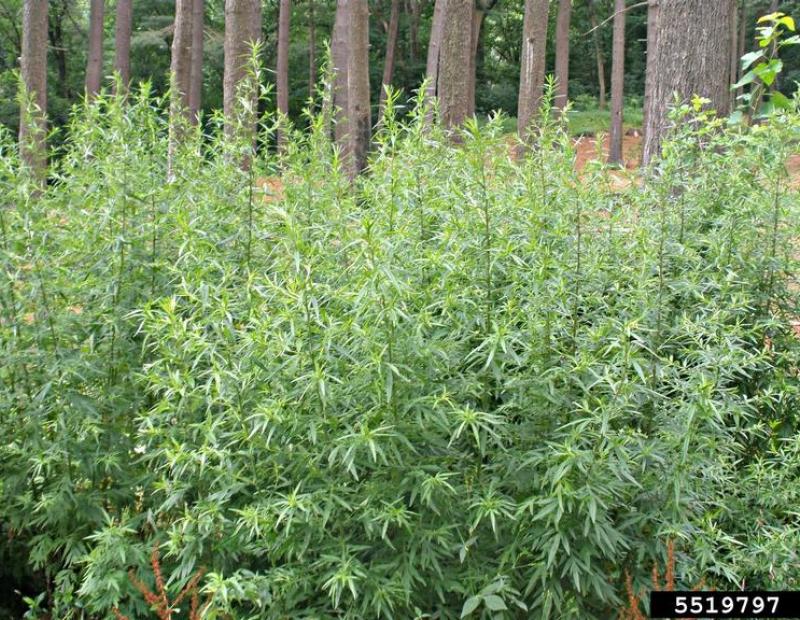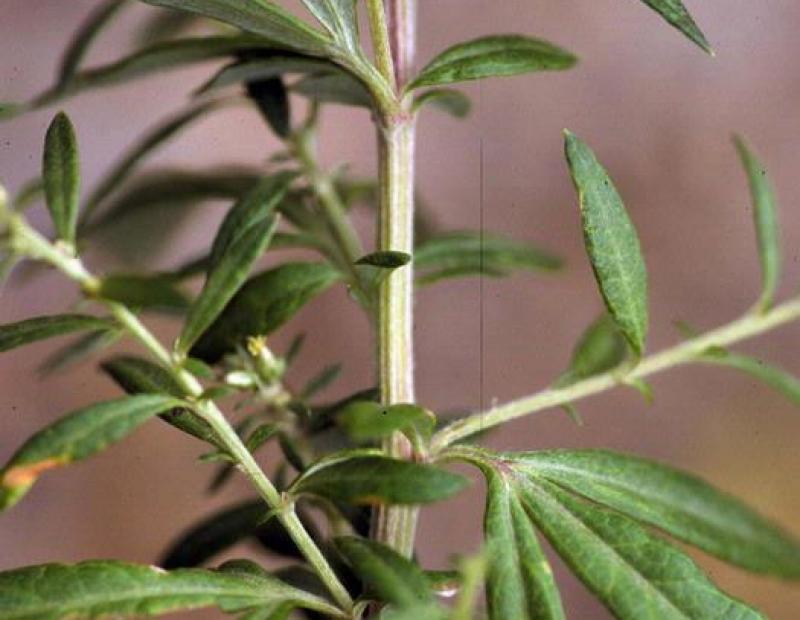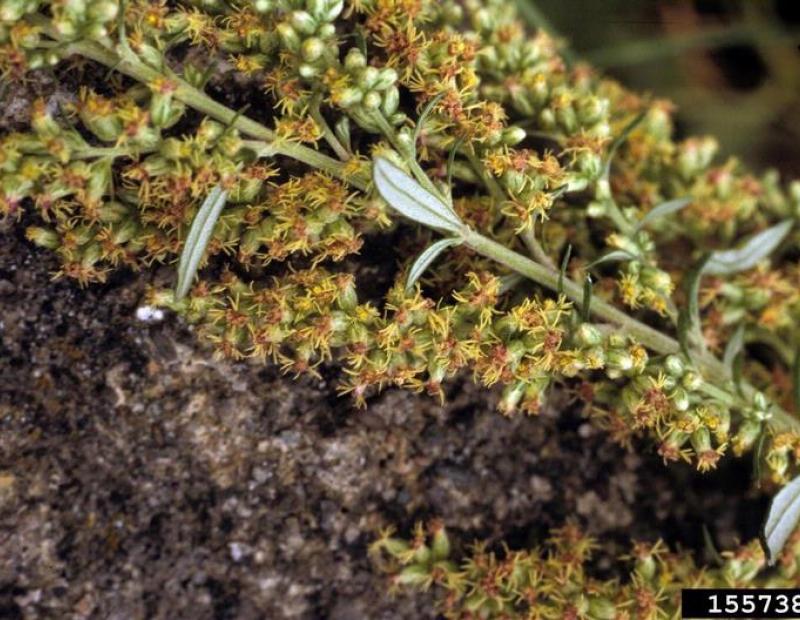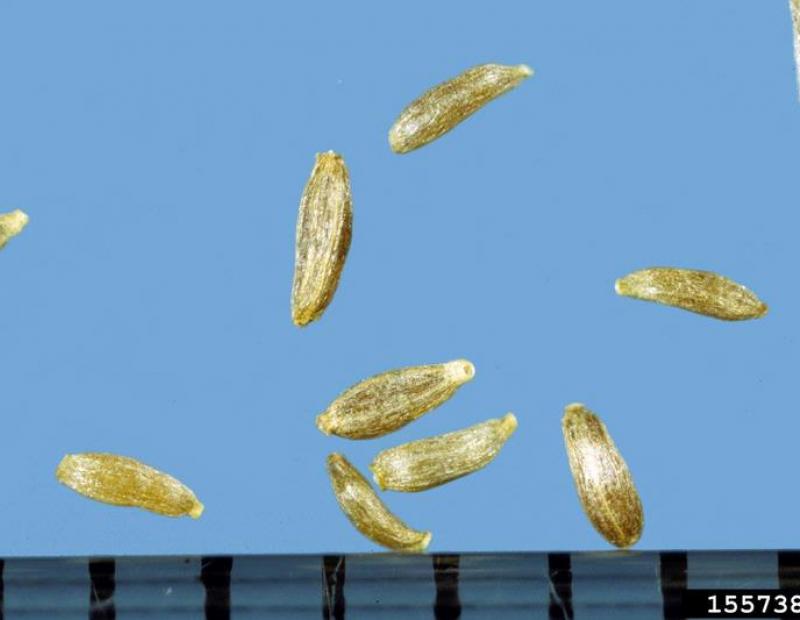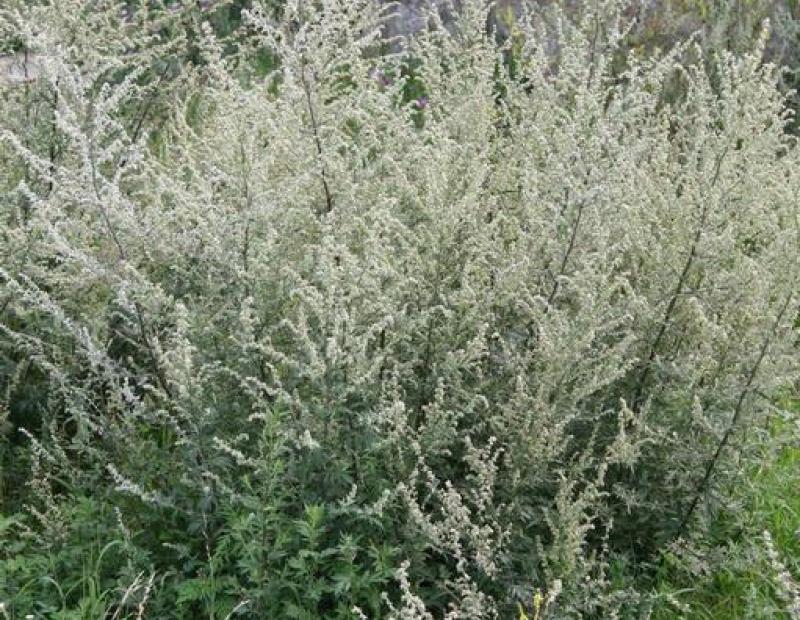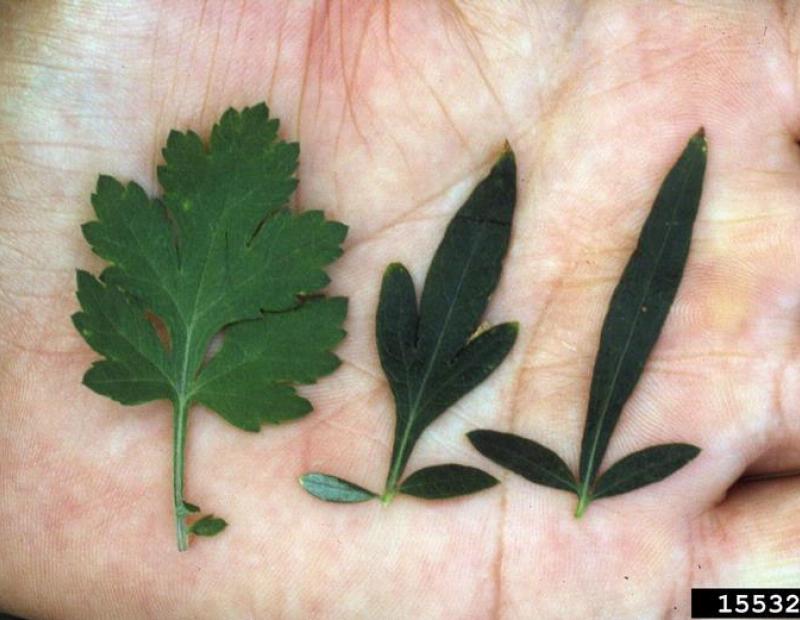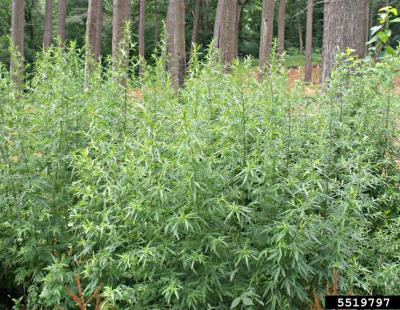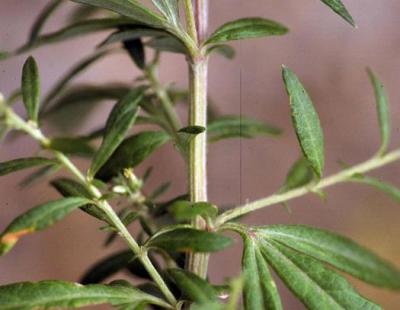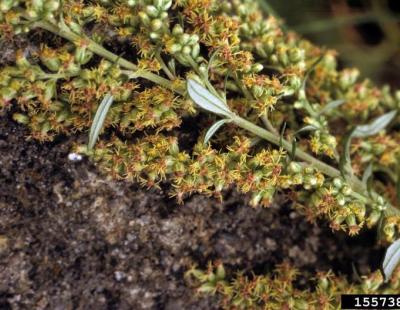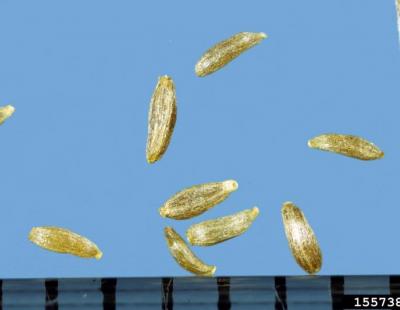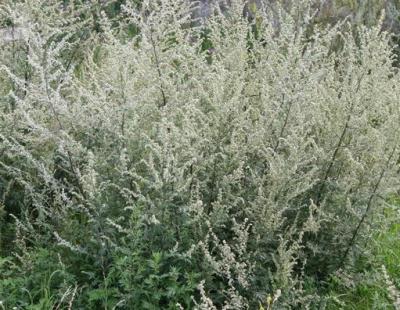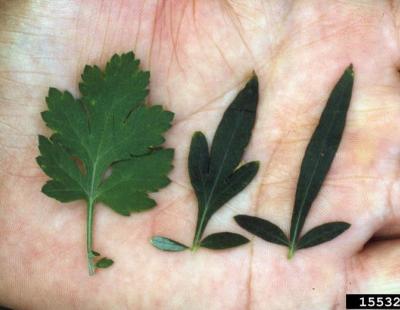Vertical Tabs
- Mugwort is a member of the Aster family (Asteraceae)
- An herbaceous perennial native to northeastern Asia, Mugwort grows two to five feet in height, has gray-green leaves, and a non-descript, inconspicuous flower blooming in late summer. All parts of the plant are aromatic when crushed. (1)
Leaves
Leaves are alternately arranged, simple, though lobed, and dark green on the upper surface and soft gray below. The leaves closest to the base differ in shape from those further up the stem and are elliptic and lobed almost to the midrib. (1)
Flowers
Flowers emerge in late summer to early fall, are arranged in clusters and are largely inconspicuous. A member of the sunflower family, Mugwort has only un-showy ‘disc’ flowers with no petals. Flowers change from white-green to purplish as the season advances. (2)
Mugwort spreads aggressively via an extensive rhizome system and can form large stands that displace native species. It is considered a problematic weed of nurseries, orchards, sports fields, forest edges, and roadsides. Mugwort is wind-pollinated and therefore produces a lot of pollen that can be distributed over long distances, causing severe symptoms in allergic humans. Mugwort is difficult to eradicate because its rootstock overwinters in the ground and it has a large seed bank.
Biological Control
The stem boring fly, Oxyna parietina is a possible candidate for biological control, although its use has not yet been approved. (9)
Manual or Mechanical Control
Pulling / Digging Up: Pulling by hand is an ineffective method of control and may even stimulate increased growth due to rhizome fragmentation. (7)
Mowing: Mugwort is highly tolerant of mowing, although at least three mowings per year for at least two years does decrease infestation size by approximately one fifth. (12) For greatest effectiveness, mowing works best in conjunction with chemical control. (8). If mowing is utilized as a management method it must be completed before fall seed set.
Girdling: Not applicable
Prescribed Fire: Studies suggest Mugwort’s underground rhizomes provide some level of fire tolerance to the species, although little research exists on this topic.
Prescribed Grazing: Mugwort is not palatable to livestock
Soil Tilling: Not advisable. Tilling may fragment roots and encourage re-sprouting and vigorous growth.
Mulching: Not applicable
Solarization: Not applicable
Hot Foam Spray: Not applicable
Chemical Control
The pesticide application rates and usage herein are recommendations based on research and interviews with land managers. When considering the use of pesticides, it is your responsibility to fully understand the laws, regulations and best practices required to apply pesticides in a responsible manner. At times, the pest you seek to treat may not be on a pesticide label, requiring a 2ee exemption from NYSDEC. Always thoroughly read the label of any pesticide and consult the NYSDEC or a licensed pesticide applicator with questions.
Foliar Spray: Mugwort is tolerant to a variety of herbicides and generally requires repeat applications to achieve suppression or control. Higher rates of control (80%-90%) can be achieved with picloram and clopyralid as opposed to glyphosate, which needs higher concentration levels and at least two applications to achieve 70%-80% control. Always read and follow all instructions on the herbicide label. (13)
Cut Stump: Not applicable
Basal Bark: Not applicable
Hack-And-Squirt
Stem Injection: Not applicable
Pre-Emergent Spray: Not applicable
General management overview and recommendation
Sequential mowing coupled with sequential herbicide treatments will provide the highest rate of control. Plants should be mowed at least twice prior to foliar applications, and at least two applications will be necessary during the first year of control, ideally beginning in late spring. For very small infestations, cutting and spot spraying or careful hand pulling— making sure to extract as much of the rhizome as possible— will eventually achieve eradication. (13)
Post treatment monitoring
Depending on the management method employed, controlled populations should be revisited throughout the growing season for repeat management activities. Mugwort seeds are viable for three to four years: after control is achieved, if achieved at all, the site should be inspected for at least this long to manage any newly emerged seedlings or sprouts.
Disposal Methods
Waste material can be crushed, burned or composted so long as management was completed prior to seed set. Any seed heads must be bagged and disposed of, and any rhizomes thoroughly crushed or dried.
REFERENCES
- https://www.invasiveplantatlas.org/subject.html?sub=5148
- https://gobotany.newenglandwild.org/species/artemisia/vulgaris/
- http://www.ces.iisc.ernet.in/biodiversity/sahyadri_enews/newsletter/issu...
- https://plants.usda.gov/core/profile?symbol=arvu
- https://wiki.bugwood.org/Artemisia_vulgaris/NJ#Look-alikes
- http://www.hrijournal.org/doi/abs/10.24266/0738-2898-22.3.139?code=hrin-...
- http://www.nyis.info/index.php?action=invasive_detail&id=63
- https://www.jstor.org/stable/3989558?seq=1#page_scan_tab_contents
- https://www.plantwise.org/KnowledgeBank/Datasheet.aspx?dsid=7108
- https://weedecology.css.cornell.edu/pubs/Artemisia%20CanJPlSci.%20articl...
- https://www.jstor.org/stable/3988562?seq=1#page_scan_tab_contents
- https://reeis.usda.gov/web/crisprojectpages/1009011-integrated-managemen...
- http://www.bioone.org/doi/abs/10.1614/0890-037X(2002)016%5B0346:IOSHTH%5D2.0.CO%3B2

